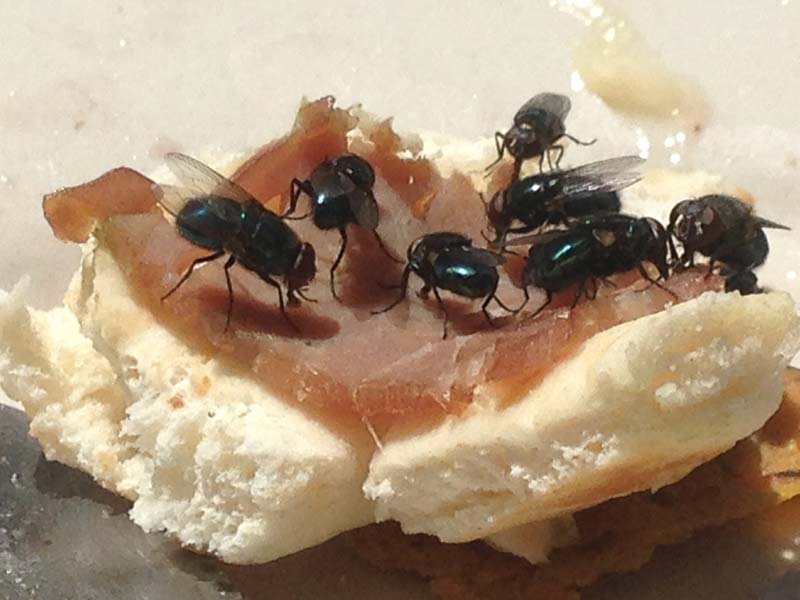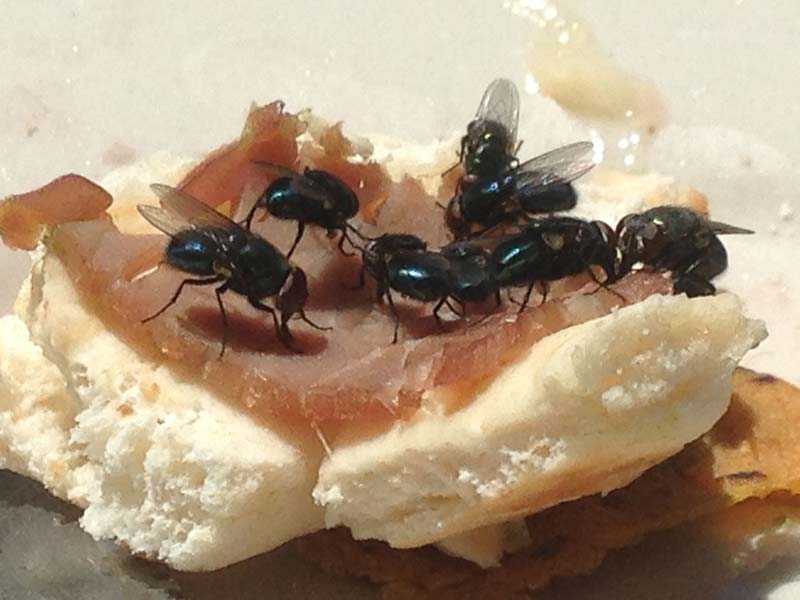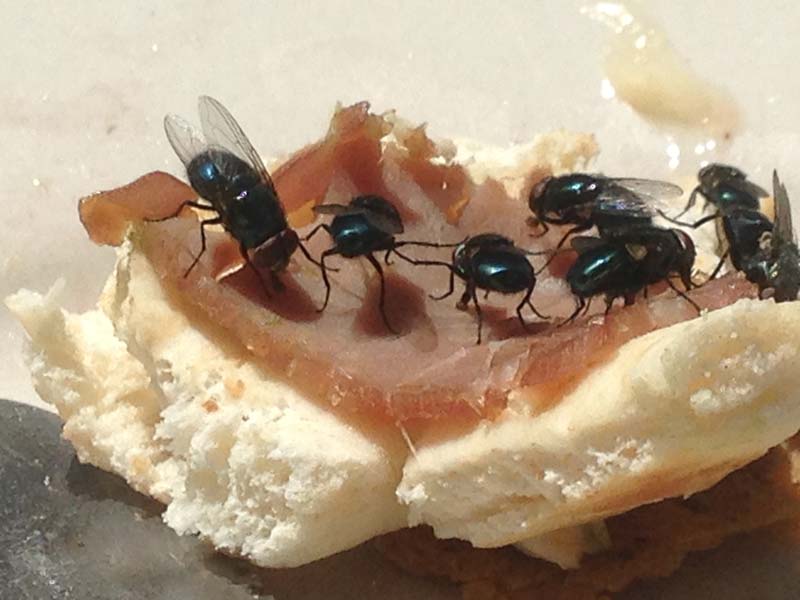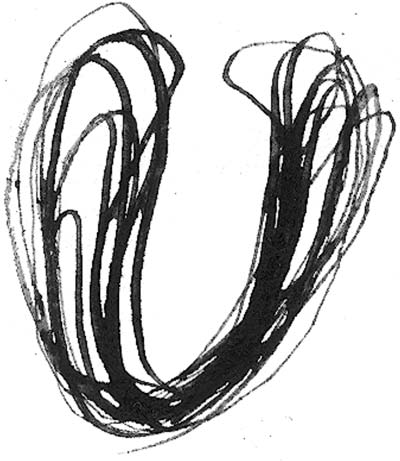CRY VIII
thin layers of rock relocated, edaphic (soil) conditions, shallow profile of soil, geomorphology of the area, export decomposable plant debris, buffer, erosion, logging operations, increased need for meat in the so-called first world, their bodies are enlarging, remove the forest for grazing, the diet calls for it, felling, pollen analysis shows that temperate forests were removed in the mesolithic and neolithic times and thereafter accelerated, continues to accelerate, agriculture, fuel, charcoal, smoking, wood for construction, smelting of metals, mining of ores, smelting of metals, short bodies, often tergal keels quadrangular flat-backs, tapers towards the ends, head usually subtriangular, cylindrical often with ridges and crests, narrow bodies, “beak” on head, coil around their eggs or young, mainly use silk only during mating and capturing prey, on males, the first pair of legs on the 7th ring are gonopods, which are copulating organs, feed on organic, decaying matter, mate throughout the year, some may crawl into swimming pools and drown. the young resemble the adults, except there are smaller and lighter in color. the female carries the eggs, numbering from 7 to 200 in a brood pouch on the underside of her body. sprays or dusts of bendiocarb (ficam), chlorpyrifos (duration, dursban, empire, engage), diazinon, propoxur (baygon), carbaryl (sevin), pyrethrins (exciter, kicker, microcare, pyrethrum, safer) or resmethrin (vectrin) are effective. other labelled pesticides include acephate (orthene), amorphous silica gel (drione, tri-die), boric acid (perma-dust) and esfenvalerate (conquer). treatment of peat moss, leaves and bark used as plant mulches is important. subsequent sprinkling with water will carry the pesticide down into the soil where these crustaceans hide. materials such as fluvalinate (mavrik, yardex) are used outdoors. mouthparts are modified for piercing and sucking, adults can survive starvation for a year or more, in certain conditions, eggs hatch in 10 days. the nymph stage lasts 6 weeks, and undergoes 5 molts. house centipedes feed on small insects, insect larvae, and on spiders. they are beneficial though most homeowners take a different point of view. natural predators include frogs, newts, toads and small mammals which live and hunt at night on the moist areas where pill bugs live. make valuable contribution to the
~
decomposition process. pill bugs are unusual dry-land crustaceans. beetles recycle rainforest nutrients, seething with life, saproxylic, hole nesting birds, cryptic, use green colors to imitate leaves, bugs: hemiptera, elongated snout (rostrum) drill into leaves create egg chambers paper wasp, leaf beetle, stag beetle, dragon fly, grasshopper, cicada, nature bee, rhinoceros beetle, huntsman spider, termite, whirligig beetle, green tree ant, forest cricket, katydids, stick insect, golden orb spider, fireflies, ladybirds, passalid beetles, ground beetles, aquatic beetles, longicorn beetles, rove beetles, weevils, ambrosia beetles, jewel beetles, metallic wood borers, hummingbird flower mite—they travel inside the hummingbird’s nostril from flower to flower, army ants, grain beetle, pirate bug, christmas beetle, june bug, the ithystenus hoolandiae lives on the outside of logs and has an interesting sex life, the males which have unusually long legs, come in two sizes—large and small. the large male stands over his chosen mate, but the small male sometimes sneaks between his legs and mates with the female instead. like parrot fish, fossil beetle, blister beetle, southern pine beetle, fiddler beetle, crustacean: main body regions, two cephalothorax andabdomen, five or more pairs of legs, myriapoda: two main body regions: head and trunk, many legs, one or two pairs of legs per trunk segment, arachnida: two main regions: two cephalothoraz and abdomen, four leg pairs, insecta: three main body regions: head, thorax and abdomen, three pairs of legs, crustacean: order: isopoda oniscoidea, wood lice, water fleas (daphnia), fairy, brine, tadpole and clam shrimps, copepoda: water fleas (cyclops), fish lice, gill maggots, and an anchor worms, ostracoda: seed shrimps, cirrepedin: barnacles, stomatopoda: mantis shrimps,
mysidacea:
opossum shrimps, decapoda: shrimps, prawns, lobsters, cray fish and crabs, amphipoda: freshwater shrimps, gammarus, and sand hoppers, tsopoda: sea slaters, water slater, they nibble on dead matter that collects on rocky shores. scavengers, affected by reclamation and pollution. decomposition of faecal pellets contain fungal spores in deep moist leaf litter by woodlice is important in simulating decomposition in woodlands in the u.s., woodlice are used by museum workers to clear the flesh from delicate vertebrate skeletons. individual hemilepistus are able to walk several kilometers in a few days in a rigorous desert environment. graze on the microscopic plants floating in the sea. rice paddies, borrowing crabs and mud-eating
—Brenda Iijima
The Neighbor Who Lives to My Left
The neighbor to my left rings my doorbell. He tells me about being a call-in guest on his favorite local radio show. This week’s show was on the city’s drunk driving problem. He called to offer his solution: Make cars out of rubber. He explained, They’ll just bounce off each other. At first, while he talked, there were only a few flies – easy to ignore. But he kept talking and, after about an hour, there were hundreds of them flying out of his mouth. The stranger his ideas, the more flies. Soon, I was being swarmed. I was fresh road kill in the middle of the street – as though I had been struck by a recently out-of-work postal worker. Only, I didn’t see a bright light. Our city has no budget for an afterlife.
—Eric Paul
Imagine everywhere filled with a constant sound of bugs, rising over even the sound of people talking. A constant reminder of another other, yet all-encompassing. There would never be a silence, or pause – or there would be but it would fill with chirping vibration. I am sure we would accustom ourselves to the noise, not even notice it. We would find true silence strange. What if, in a pause, we could hold out our palm and let a cricket settle there, kiss it like we do our cats, and then let it fly away – in that way crickets do. I am often surprised by bugs, usually the smallest ones, so intricate and colorful, the size and color almost impossible. The other day I killed one without knowing – on my forearm it had been stamped, perfectly flattened and preserved, as if on a glass slide for inspection, a smear of its own blood beside it, like a larger, third wing. I didn’t want to wash it off, but I did, into a sink just cleansed of dishes. I felt guilty and huge – like a clumsy, harmful god. I saved a dragonfly once, but it didn’t matter. How many bugs have I killed in a lifetime without knowing? With knowing? How many can I hear outside my window? What if I told you about the housebug I killed and left on the tile floor for ants to pick apart until nothing was left? How it took days. A week. And I watched, amazed. I am surrounded and all I do is flail. Not wanting to hurt, but hurting. And yet still given the gift of falling asleep to the sound of an immense and buzzing unknown.
—Sara Sheiner



—TC Tolbert
An Articulate Life
the monarch’s, his proboscis unravels
down past his navel
where it enters an arch
cut in divinity’s very wall; unlike the camel,
he does not kneel
rather straddles his demesne
(or hers) as sure-footedly as a goat,
able to feel that the wind blows
this way and that, that the mean
he has in mind is yellower
than Euclid’s. He is king
of nothing
so much as knowing that milkweed’s secret
is not having “a third whorl of five hoods,”
but indifference
to his equipage over any other’s.
—Luke Brekke
Insect Poem
I am taking the air home with me.
Someone punch my chest.
Someone from truth to guide each thing living.
I believe in everything there ever was
and what it has come down to.
I believe in anything else, too.
Everything from other times that’s still here—
stirrup pants, Rome.
A holy era is in me and I want
to use it on whatever is here.
This weekend, having company,
drinking lemonade with them and whiskey,
and eating roasted chicken and clementine
muffins covered with sugar out on the deck,
that the sumac trees, with all their winged
pests, have covered, I thought
about the appropriateness of being holy,
and how each suitable breath in this place
can knock my air out
in a way that makes me feel
like I was meant to be caught, like after jumping
from the porch into Ramona’s arms
when I was eight, and she would have
caught me but she was looking the other way,
out, across the school hill, into dusk, at Billy.
I am taking the air home with me.
Someone punch my chest.
Someone with large hands who has just stopped singing.
I believe that we are made of wolves
and what is in wolves, their cloudy bones,
the small mammals, white tailed deer,
and everything vocal surrounding them—
air, spectrographs, movies of wind.
—Jennifer Denrow
1967
Homeless at fourteen I stayed in the back room of The Family Zoo a false art studio with a woodstove burning through Spokane’s hottest summer I hid my violin and backpack under a pile of blankets watched over by Bob & his black lab & Jesus threading through Jesus all the time hippie preachers baptisms in the river free meals out of a painted school bus & LSD in a half bottle of wine passed between us at High Bridge Park I was loose I was insane full of mental illness my hair down to my ass the little white frail blouse of torn eyelet lace and lace up boots hard enough to kick with I twirled in the field my hair spun out when a bee flew into my naked & a boy said a bee flew up a bee flew up I laughed & kept twirling then was stung on my left nipple & I fell into the grass & writhed a new poison making itself known straight into my heart from my most tender I fell into the grass & the Jesus People came to me & laid hands on me thinking I was being visited by Our Lord & Savior & I screamed until someone finally bared me & slathered me with mud.
—Rebecca Loudon
How long does a building stand before it falls?
How long does a contract last? How long will brothers
Share the inheritance before they quarrel?
How long does hatred, for that matter, last?
Time after time the river has risen and flooded.
The insect leaves the cocoon to live but a minute.
—The Epic of Gilgamesh, translated by David Ferry
The Secret Life Of
I say I hate bees, kill them all. What I mean is I am hurting so much. This flying autonomy. I tap the jar twice, five eyes arranged like planets. It’s all in the size of the wings, the speed of the flapping: how sound departs in echo. I am alone again, for the first time in a long while. The lavender attraction, the ways of suckle and warble. Thousands, hundreds, less than, one. If I am to collect, let me collect for the entire colony. Let me carry weight and then some. If you are a mirror, allow me take a long look. When I see you, it is as if every curve of affection is betrayal. If nest, how faulty. Between the mouth and the rectum, how to communicate efficiently. I apologize as hum and beat per minute. Look at me. Don’t look at me. You say you can hear my laugh through the petal walls before I have arrived. Please look at me. Tell me about your honey stomach, about the time you were gagged and spanked and left in the morning of some summer light or winter glaze. Tell me about queen sadness. Tell me how you live with the buzz of ghosts.
—Katie Jean Shinkle
I HEARD IT DO IT WHEN I DIED
Recently, I was sitting with a book of poems that made an obtuse but unmistakeable reference to the high-profile romantic entanglement of the musicians M.I.A. and Benjamin Bronfman.1
I guess I sort of bristled, frustrated that the book was asking me to think about these specific figures, specifically. For all the primacy of detail in poetry, something I still really hope for in poetry is the occlusion of actual individual people. I feel weary of our now-world, with its striving and crowing and fashioning of selves, and what I seek out more and more is a respite from the cult of the individual.
But also, what I’m learning, in my own writing and in good books I read, is how difficult it is to get away. The aforementioned cult of the individual, when you get down to it, is like the fly in the eponymous David Cronenberg film2
—it gets mixed with you in the giant microwave or whatever exactly happened,3
and you spend the rest of your days wishing it out of yourself / detesting yourself, but also learning how to live with it, how to not let it compromise your craft, your home, your soul. And then you die. Or the woman you love dies. I’m honestly not sure which one it was.
—Natalie Shapero
Notes
1“Musicians” is, by my calculations, the quickest and most convenient way to describe these two individuals, but it is certainly not the only option. See, e.g., “M.I.A. vs. Benjamin Bronfman,” Huffington Post, Mar. 13, 2013 (last visited Sept. 21, 2015) (“Rapper M.I.A. and her ex-fiance, billionaire environmentalist Benjamin Bronfman”).
Return to Reference.
2Yeah, I know there was an earlier one; didn’t see it.
Return to Reference.
3???? Does anyone remember? PM me.
Return to Reference.
Dear Bee:
You can’t take this
New world either, but you have to learn
To stay... Don’t go into
The heaven of ideas
With the Tasmanian tiger
Just yet
Let not your stripes
Turn an old map to
The dried-up youth spring
Bee there is
An invisible bloom
Eat from it please. Get in touch,
When it’s time
To make it back up the big blue, leave
In your wake
A survival blueprint for babies
Just bursting from
Their combs and deal
That only sting
To death
Pierced on the lisp of your
Secret kizz
—Ana Božičević
The Bees
which are colony-collapsing, which are my love’s greatest fear, which are the bringers
of honey. The bees which are, which are, which are—
for now. I could romanticize the bees. I could make them icons
of feminism and collectivization, or socialism,
but they are workers in service of a queen. Or, fuck that,
some patriarchal scientist named her Queen. Maybe she’s just
the bee who has the job of baby-making. What is so queenly
about that? My love wants no babies. My love
is afraid, above all, of a persistent buzz in her ear
says she could live without honey for all eternity
if the bees end up dying. Don’t make us pay
for your trauma, I say. But I wasn’t there, can’t imagine
the cloud as it buzzed, the onslaught and thrum
alive in the swarm as it swam through the air
tangled in their girl-hair, glittering stinging
screaming and running, the whole earth alive with the bringing
of pollen, of honey, of pain.
—Caroline Mar
(explosive)
All evening, the bee has been hovering at my wrists or near the small shadow behind each of my ears. Once, I almost feel the whisper of its sting. You must be irresistible, another professor laughs. We’re standing under the trees beside the college library, clusters of faculty waiting for dinner to be served. It’s one of those obligatory social events which brings us together at the start of a new school year, we who prefer the dark enclosures of our offices to this—ticking conversations and the instability of other bodies. “Like dogs, bees are trained to find explosive materials using simple Pavlovian conditioning,” explains Rachel Herz in The Scent of Desire. “Bees learn this association very quickly and within minutes you have an army of explosive hunting bees…clustering and hovering over the location of interest.” The bee won’t stop circling. It keeps returning to the space just above my skin. I think it has mistaken the synthetic tuberose of my perfume for the stink of real flowers, night-blooming, waxy-petaled. I swat and twitch. At other tables, I see colleagues whose faces make in me a kind fuse. I have forgotten them all summer long. Now, watching their mouths again and the brittle shapes their gestures form in the air, I am reminded of how close I am to landmine. How close we all are. Surely, the bee smells the firing mechanism in all of us, the charge. We are each locations of interest. We are tripwire and spark.
—Jehanne Dubrow
My husband’s tongue
Is bitter like the roots of the lyonno lily,
It is hot like the penis of the bee,
Like the sting of the kalang!
Ocol’s tongue is fierce like the arrow of the scorpion,
Deadly like the spear of the buffalo-hornet. -
—Okot p’Bitek, from “The Song Of Lawino”
GONE BEATIFIC, SEED-CAST
toward a dictionary of bee-flight
“this tiny insect life portal to another” —Dickinson

the sex of a soulits flower-rhyme
the brain articulates
divination by the viscera of words
cumulous, tremulous
known through its starling voice, a little like Jim Morrison
a little like Arnaut Daniel, like unobstructed wind in a dark place

hypnotic, hypotonic the baby’s head falls back
gives off radiance
your mouth of dust turned gold your mouth
of nothing your mouth of heterotrophic birds set free
Notes
from ink drawings of bee flight transposed into edited video stills
hemispheres of the human brain are shaped like the figure-8 pattern of the “waggle-dance” whose duration indicates distance of the food-source from the hive
—Meredith Stricker
Okay so there were so many bugs last night. When I got home they were little and all over the kitchen floor. And several in my cats’ food bowl so I had to wash it very well. I sprayed bleach around and stomped on all I could because I wore my hiking boots yesterday and felt sturdy. Tonight I just got home and killed an enormous cockroach in my bathroom and I’m feeling gruesome about it. Several weeks ago when the bugs began to come, I drowned one little one while I was showering and felt so wretched and guilty about it that I grieved for a day. The next shower though had several little bugs and I wanted them all to die and killed most probably. I still feel weird about this. One of the three-year-old students in my preschool class saw a dragonfly outside and was so so excited. He yelled LOOK A DRAAAAAGONFLY in his perfectly hilarious voice. And chased it for a while
—Alexandra Dillard